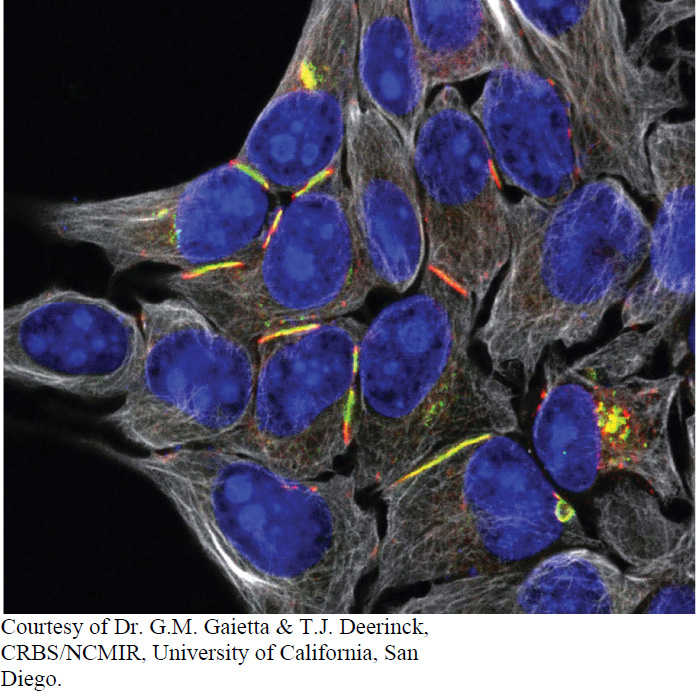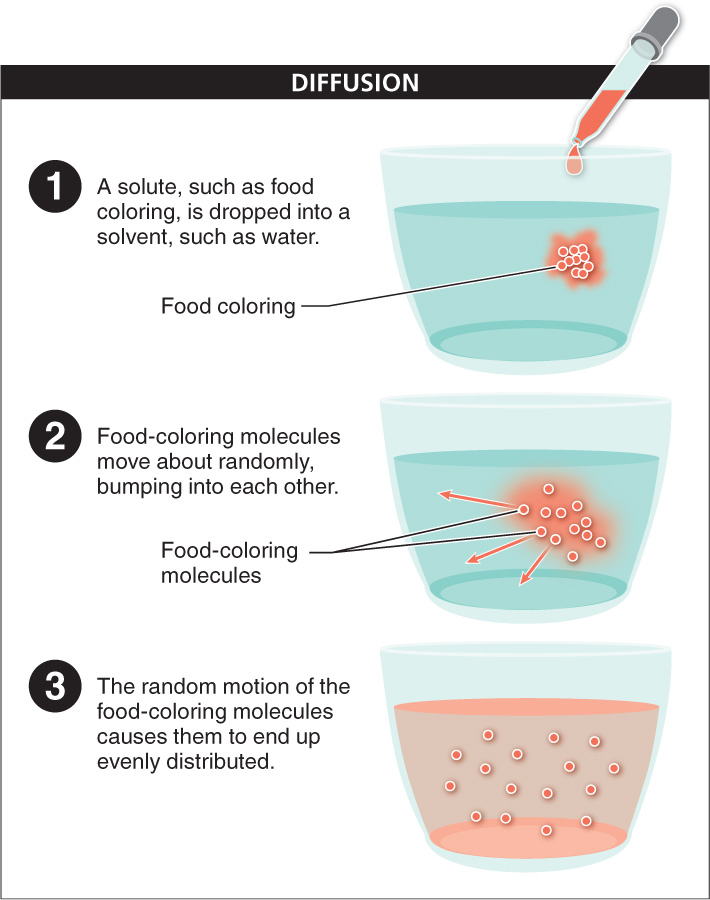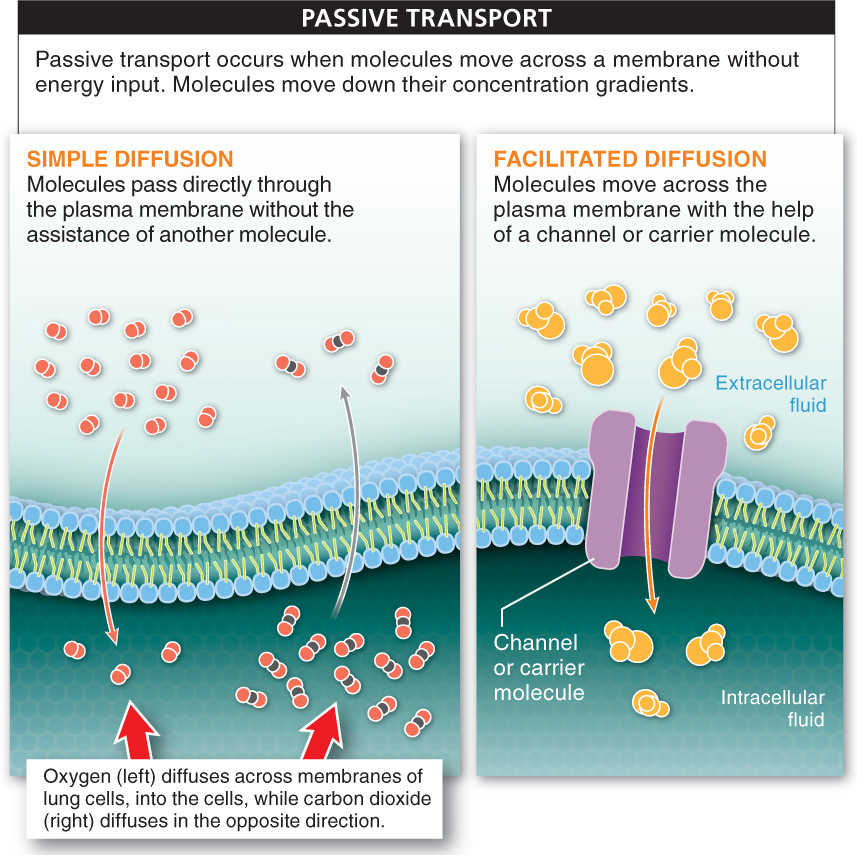
To function properly, cells must take in food and/or other necessary materials and must move out both metabolic waste and molecules produced for use elsewhere in the body. In some cases, this movement of molecules requires energy and is called active transport. (We cover active transport later in this chapter.) In other cases, the molecular movement occurs spontaneously, without the input of energy, and is called passive transport. There are two types of passive transport: diffusion and osmosis. (Osmosis is discussed in Section 3-
Diffusion is passive transport in which a particle, called a solute, is dissolved in a gas or liquid (a solvent) and moves from an area of high solute concentration to an area of lower concentration (FIGURE 3-17). A difference in the concentration of solutes in two areas is called a concentration gradient—and the larger the difference in the concentration of the solutes in the two areas, the greater the concentration gradient is.

We say that molecules tend to move “down” their concentration gradient. This movement occurs because molecules move randomly and are equally likely to move in any direction (in the absence of any other forces). And so when certain molecules are highly concentrated, they keep bumping into each other and eventually end up evenly distributed. For a simple illustration, drop a tiny bit of food coloring into a bowl of water and wait for a few minutes. The molecules of dye are initially clustered together in a very high concentration. Gradually, they disperse down their concentration gradient until the color is equally spread throughout the bowl.
103
In cells, molecules such as oxygen (O2) and carbon dioxide (CO2) that are small and carry no charge can pass directly through the phospholipid bilayer of the membrane without the assistance of any other molecules, in a process called simple diffusion. Each time you take a breath, for example, there is a higher concentration of O2 molecules in the air you pull into your lungs than in your blood. And so that oxygen diffuses across the plasma membranes of the lung cells and into your bloodstream, where red blood cells pick it up and deliver it to parts of your body where it is needed. Similarly, because CO2 in your bloodstream is at a higher concentration than in the air in your lungs, it diffuses from your blood into the cells of your lungs and is released to the atmosphere when you exhale (FIGURE 3-18).

Most molecules, however, can’t get through plasma membranes on their own. Polar molecules (electrically charged) are repelled by the hydrophobic middle region of the phospholipid bilayer. Or the molecules may be too big to squeeze through the membrane. These molecules may still be able to diffuse across the membrane, down their concentration gradient, with the help of a transport protein. Often, this transport protein spans the membrane and functions like a revolving door, allowing movement of molecules in either direction, depending on their concentration gradient. When spontaneous diffusion across a plasma membrane requires a transport protein, it is called facilitated diffusion (see Figure 3-
Defects in transport proteins can reduce facilitated diffusion or even bring it to a complete stop, with serious health consequences. Many genetic diseases are the result of inheriting incorrect genetic instructions for building transport proteins. In the disease cystinuria, incorrect genetic instructions result in a malformed transport protein in the plasma membrane. When structured and functioning properly, this transport protein facilitates the diffusion of some amino acids (including cysteine, from which the disease gets its name) out of the kidneys into the urine. When the protein is malformed, the transporters cannot facilitate this diffusion and these amino acids build up in the kidneys, forming painful and dangerous kidney stones.
Diffusion across membranes doesn’t occur just in animals—
TAKE-HOME MESSAGE 3.8
For proper functioning, cells must acquire food molecules and/or other necessary materials from outside the cell. Similarly, metabolic waste molecules and molecules produced for use elsewhere in the body must move out of the cell. In passive transport—
Why can some molecules diffuse directly across a phospholipid bilayer, while other molecules can only cross the membrane with the assistance of a transport protein?
Small molecules carrying no charge are able to pass directly through a phospholipid bilayer. Molecules with a charge are repelled by the hydrophobic middle region of the membrane, and larger molecules are unable to squeeze through the membrane. These molecules unable to cross the phospholipid bilayer directly still can pass through the membrane with the assistance of a transport protein.
104